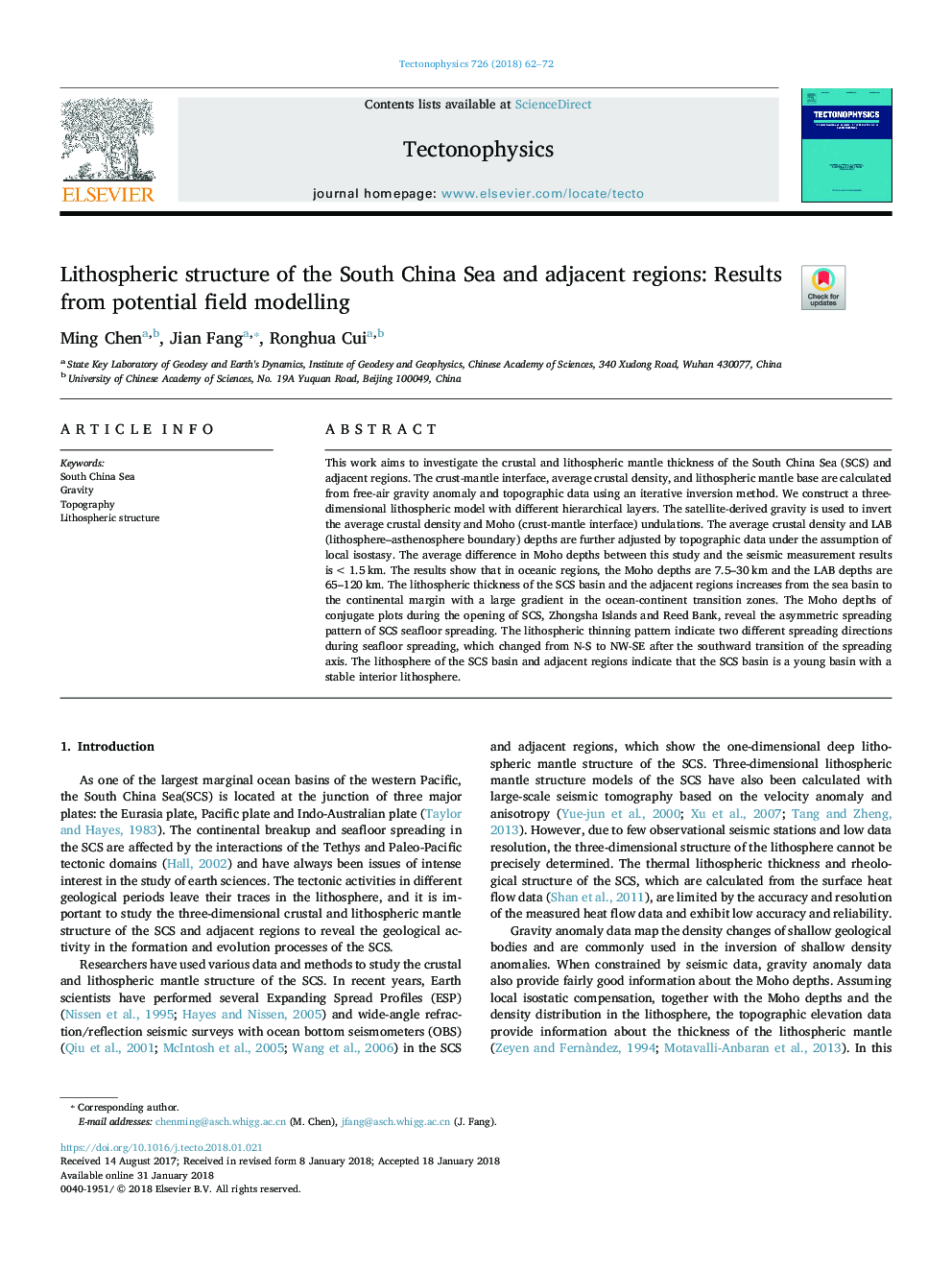| Article ID | Journal | Published Year | Pages | File Type |
|---|---|---|---|---|
| 8908751 | Tectonophysics | 2018 | 11 Pages |
Abstract
This work aims to investigate the crustal and lithospheric mantle thickness of the South China Sea (SCS) and adjacent regions. The crust-mantle interface, average crustal density, and lithospheric mantle base are calculated from free-air gravity anomaly and topographic data using an iterative inversion method. We construct a three-dimensional lithospheric model with different hierarchical layers. The satellite-derived gravity is used to invert the average crustal density and Moho (crust-mantle interface) undulations. The average crustal density and LAB (lithosphere-asthenosphere boundary) depths are further adjusted by topographic data under the assumption of local isostasy. The average difference in Moho depths between this study and the seismic measurement results is <1.5â¯km. The results show that in oceanic regions, the Moho depths are 7.5-30â¯km and the LAB depths are 65-120â¯km. The lithospheric thickness of the SCS basin and the adjacent regions increases from the sea basin to the continental margin with a large gradient in the ocean-continent transition zones. The Moho depths of conjugate plots during the opening of SCS, Zhongsha Islands and Reed Bank, reveal the asymmetric spreading pattern of SCS seafloor spreading. The lithospheric thinning pattern indicate two different spreading directions during seafloor spreading, which changed from N-S to NW-SE after the southward transition of the spreading axis. The lithosphere of the SCS basin and adjacent regions indicate that the SCS basin is a young basin with a stable interior lithosphere.
Related Topics
Physical Sciences and Engineering
Earth and Planetary Sciences
Earth-Surface Processes
Authors
Ming Chen, Jian Fang, Ronghua Cui,
